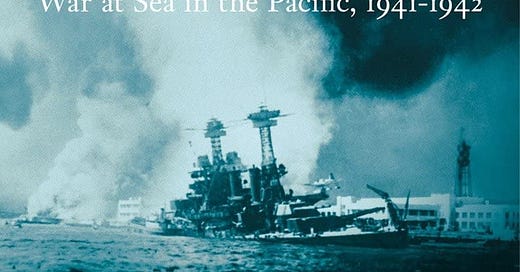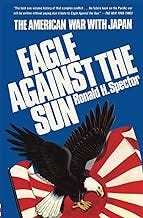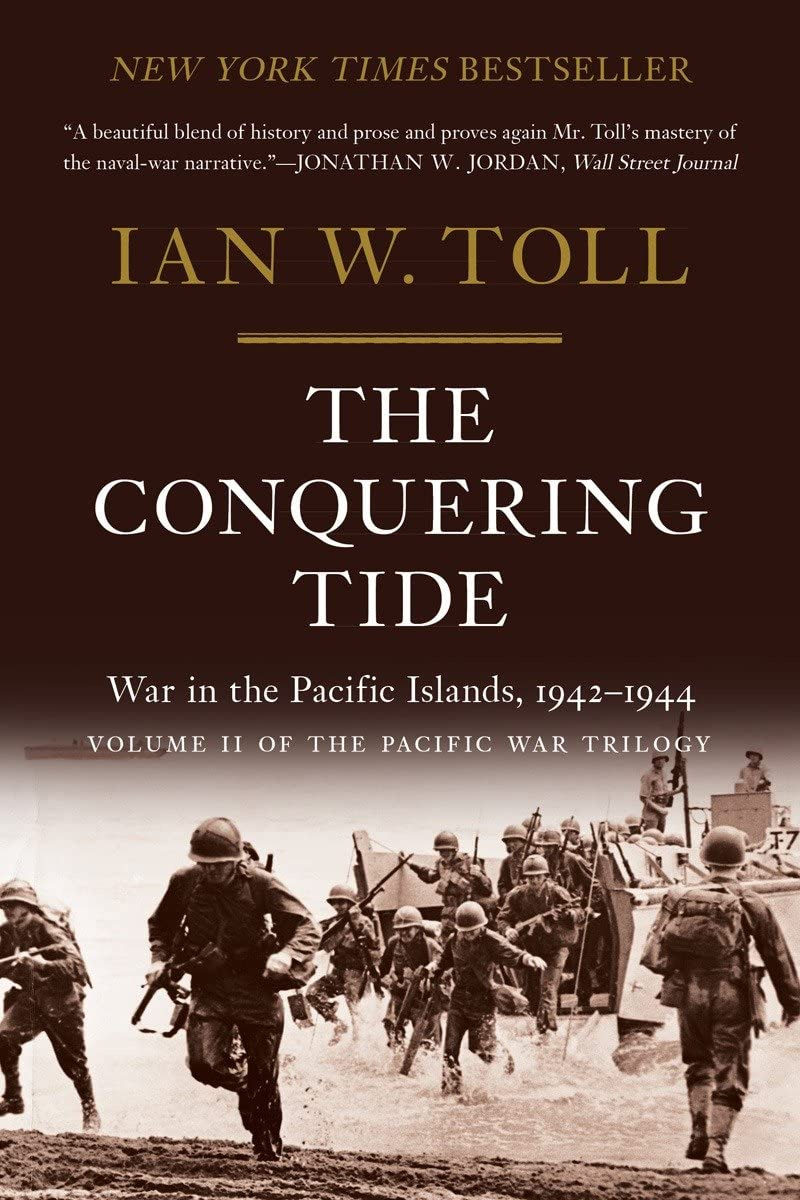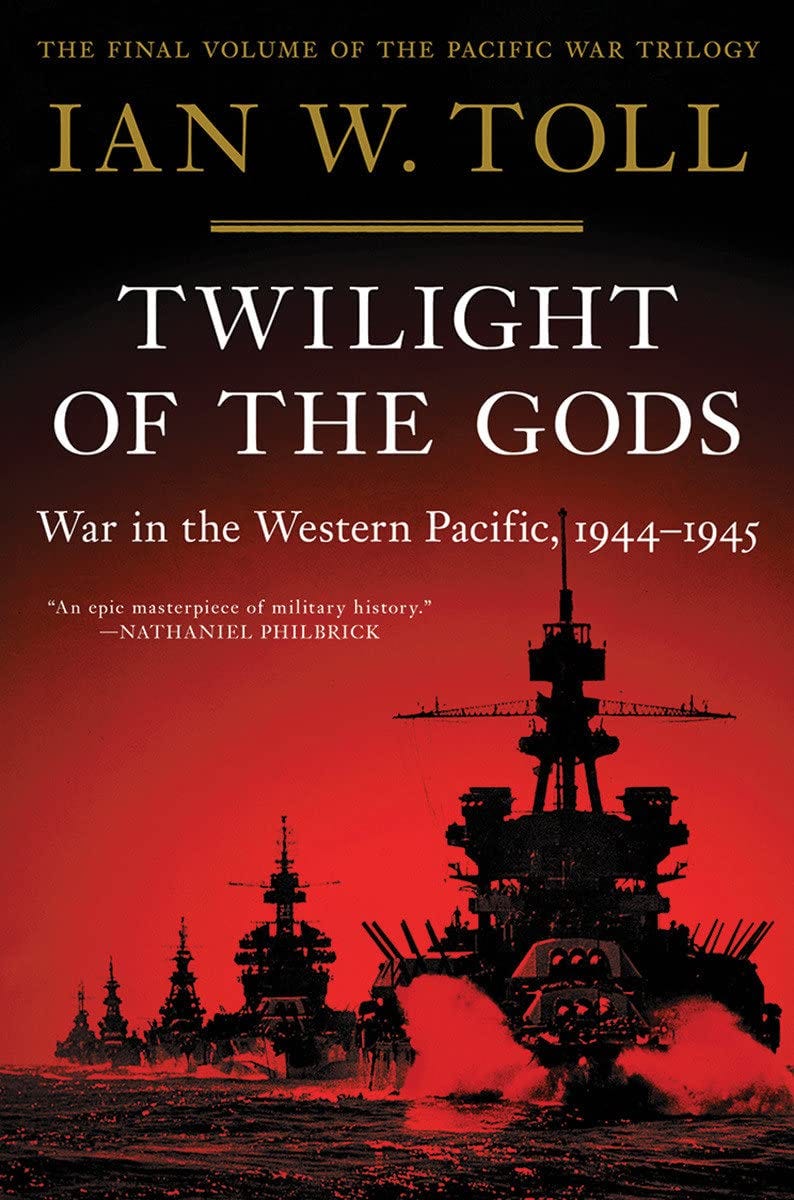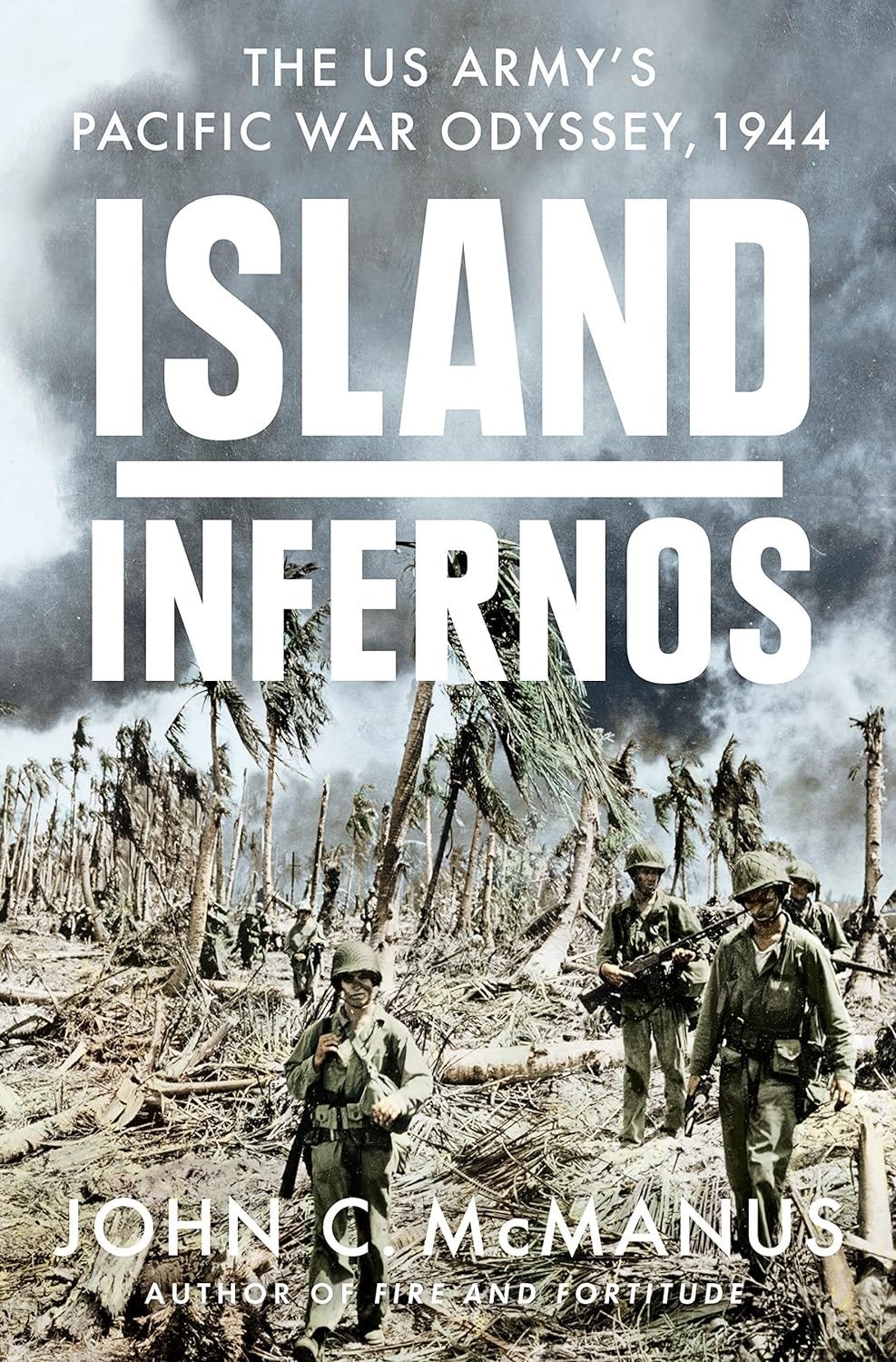For years, Ronald Spector’s The Eagle Against the Sun was about the only comprehensive book on the American conflict against Japan in World War II. There was a small section in Robert Leckie’s The Wars of America, but certainly nothing even remotely comprehensive.
I think now we can say the history has been written, coming from two different authors, Ian Toll writing of the U.S. Navy in the Pacific in WW II, and John McManus writing about the exploits of the U.S. Army. (There have been several books on bombing offensives in both theaters of the war by Michael Sherry, Geoffrey Parret, Conrad Crane, Eric Bergerud, and McManus himself).
Toll’s series on the Navy—Pacific Crucible, The Conquering Tide, Twilight of the Gods—-is nothing short of spectacular. He deftly swings between up close narratives of brutal deck-level combat to the horror of Marine invasions to grand strategy between Admirals Chester Nimitz, Bill Halsey, and Ernest King. He doesn’t shy away from interpersonal problems, inflated egos, or flat-out military misjudgments, particularly Halsey’s arrogant attempt to ride out a typhoon. Toll is quick to identify American weaknesses, from torpedoes that didn’t work to early torpedo planes that were sitting ducks to the over-expectations about the effectiveness of barrage or bombing on entrenched Japanese positions. But he is also generous in noting the positive traits of Halsey, Raymond Spruance, Nimitz, King, and others. The Navy to its credit developed a system of rotating its fleet admirals so they were constantly fresh—-like an NFL team shuttles in running backs. While this could not be done effectively with ground troops, ordinary sailors, or Marines, at least the brains-trust was at its best for most of the war.
Toll essentially by-passes Gen. Douglas MacArthur, and praises the division of authority in the Pacific of Nimits in the central swath, MacArthur in the southern segment. Likewise, he meticulously outlines Admiral Isoroku Yamamoto’s obsession with a knockout blow to the U.S. Navy as the only hope Japan had for a truce, knowing there would never be total victory. Yamamoto’s foolish dispersal of two carriers to the insignificant decoy mission at Attu and Kiska almost certainly doomed the Midway mission. Even so, it took an enormous amount of luck (or heavenly intervention) for the Americans to win at Midway.
After that, even though the Imperial Japanese Navy had a lot of ships left, it was done. It could not begin to build ships (especially carriers) as fast as the USA, and its pilot training ensured the new recruits were fodder for the well-trained and, by 1943, much better equipped US Naval air.
Above all, Toll is a master storyteller. You never feel bogged down in his massive trilogy.
The same cannot be said for McManus, though he also does an excellent job of providing overwhelming detail in his trilogy, Fire and Fortitude, Island Infernos, and To the End of the Earth. It may be that the nature of the U.S. Army’s slog through the islands was different and far less exciting than the broad sweeps and dramatic sea battles that the Navy fought. So I give McManus a great deal of leeway for his subject matter. He absolutely places you in the jungle with the leeches, the flies, the insufferable heat, but he doesn’t have quite the spark in his style that Toll does.
Nevertheless, you relive the struggle for every cave, every machine gun nest, and every suicide attack on every island. It becomes overwhelming, as likely it was for the poor G.I.s who had to claw their way through blood and mud just to gain another ridge line.
McManus is adept at explaining the personality differences of the major commanders, MacArthur, his nearly useless intelligence officer Charles Willoughby, and his polar opposite generals Walter Krueger and Robert Eichelberger. Ultimately MacArthur got them into the correct positions, but not until after the Battle of Manila.
In one rather glaring weakness—-after describing in detail the troops battling leeches on their eyelids, rampant venereal diseases, and flies caked on their food, McManus rapidly skips over the dropping of the atomic bombs. I understand this has been dealt with at length by Richard Frank’s Downfall, but much more needed to be said for this war-ending event, especially since it came from the Army Air Force.
Still, taken together, these six volumes make up the overwhelming story of the Pacific War. Yes, there are still the stories of the Brits and Aussies, and of the fighting in China, but it will be many years before anyone tries to tackle this subject at this level again.
(Larry and Col. James Harvey of the Tuskeegee Airmen).
Larry Schweikart
Rock drummer, Film maker,NYTimes #1 bestselling author
Remember, there is no subscription required to these columns. If you like the stuff, “Buy Larry a Coffee”:
http://buymeacoffee.com/larrys
